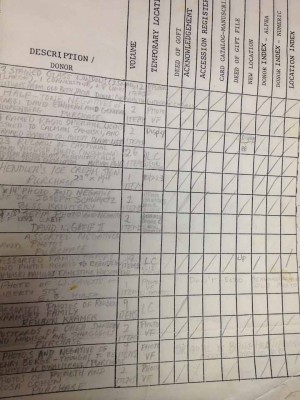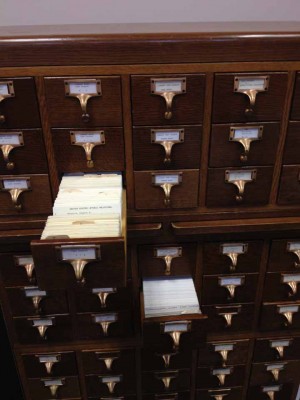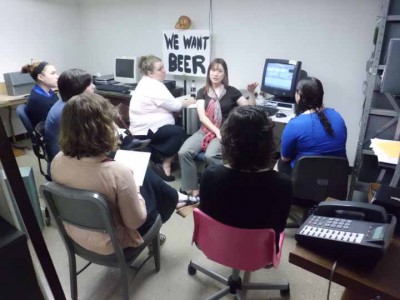A Look at JMM Collections Management Systems

For decades museums, including the Jewish Museum of Maryland, used a bound ledger to record each donation. A separate ledger was used to track each incoming and outgoing loan. Later, we moved to a large three ring binder with a hand-written spreadsheet of information.

Individual cards were then written for each individual object, with separate cards for donors and each subject, all filed accordingly into the card catalog. Sorting and storing objects and photographs according to subject which was tremendously helpful for the registrar and/or archivist responsible for finding answers to research questions, or preparing for exhibition – and much easier than memorizing thousands of accession numbers!

The JMM moved to its first automated collections management system (CMS) in the 1990s, but by early 2000 it was apparent that the DOS-based program was ill-suited for our diverse collections. Cataloging archival documents in a system designed for three-dimensional objects is truly like trying to fit a square peg in a round hole.

There are a number of CMS to choose from so it was important that we found a system that worked for our needs without selling us on features that we would never use. PastPerfect was perfect for us! Geared toward smaller museums, PastPerfect offered a database with separate (color coded!) modules for objects, archives, photographs, library books, and membership which is ideal for our history-based collection. With the AASLH member discount, we couldn’t beat the price. The program is intuitive and easy to learn. Almost everyone on staff –as well as our interns and some volunteers—uses PastPerfect for research, programs, memberships, mailings, and of course, collections management . As the administrator, I can control access levels so that records can’t be accidentally deleted. Although we can attach 999 images to each record, my one complaint is that we can only attach them one at a time.

And we just can’t say enough about their customer service–friendly, knowledgeable AND helpful! While Brian, Ginger, Jannessa, and the gang have answered hundreds of questions for us over the years, the JMM has also been able to provide PastPerfect with some valuable feedback. For example, when we told PastPerfect that we really wanted to make the collections accessible to researchers, they developed PastPerfect on-line.

PastPerfect is constantly updating and improving their product, providing a complete explanation of how the changes will affect our work. The museum will be upgrading to version 5.0 in the next few months. Some of us are a little nervous about navigating the new interface, but the promise of enhanced membership and development features have us very excited. Collections management systems in general are on-going, evolutionary process. It should also be fascinating to see what the future brings and how “primitive” today’s technology seems 20 years from now.
